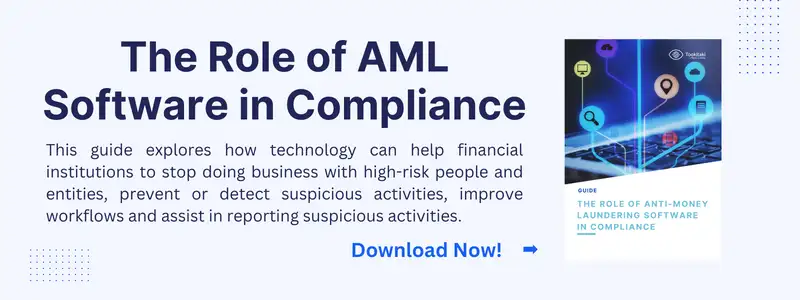Layering in Money Laundering: What It Means and How to Combat It
In today's global financial landscape, money laundering remains a significant challenge. This illicit process involves disguising the origins of money obtained through criminal activities, making it appear legitimate. Money laundering typically unfolds in three stages: placement, layering, and integration. Among these, layering is particularly complex and critical to understand.
It involves moving and transforming illicit funds to obscure their origin, making it difficult for authorities to trace the money back to its illegal source. By delving into the intricacies of layering, we can better appreciate the importance of advanced Anti-Money Laundering (AML) strategies in combating financial crime.
What is Layering in Money Laundering?
Layering is the second stage in the money laundering process, following placement and preceding integration. In this phase, the main objective is to obscure the origin of illicit funds by moving them through a complex series of financial transactions. These transactions are designed to confuse and hide the money trail from regulatory authorities, making it challenging to trace the funds back to their criminal source.
Layering involves several techniques, including electronic fund transfers, the use of shell companies, and moving funds between multiple bank accounts. These methods create multiple layers of transactions, each adding a level of legitimacy and anonymity to the illicit funds. By the end of the layering process, the money appears to be clean and can be integrated back into the legitimate economy without raising suspicion.
Understanding the mechanics of layering is crucial for financial institutions and regulatory bodies to develop effective strategies to detect and prevent money laundering. Advanced technologies and robust AML solutions play a vital role in identifying suspicious activities and ensuring compliance with financial regulations.
Common Techniques Used in Layering
Layering involves a variety of sophisticated techniques aimed at obscuring the origins of illicit funds. Criminals use these methods to create complex layers of transactions, making it difficult for authorities to trace the money. Here are some common techniques used in the layering stage of money laundering:
Electronic Fund Transfers
One of the most prevalent methods in layering is electronic fund transfers between countries or different financial institutions. By moving funds across borders or between various banks, criminals can exploit differing regulatory environments to mask the trail of their illicit gains.
Shell Companies
Shell companies are entities that exist only on paper and do not engage in any legitimate business activities. Money launderers use these companies to hold and transfer illicit funds, providing a layer of anonymity and reducing the risk of detection. These companies can be set up in jurisdictions with lenient corporate disclosure requirements, making it harder for authorities to track the true owners.
Multiple Bank Accounts
Criminals often open multiple bank accounts, sometimes in different names, to transfer funds between them. This process helps in breaking the connection between the source and the final destination of the money. By frequently moving small amounts, they avoid triggering suspicious activity reports.
High-Value Investments
Investing in high-value items such as real estate, luxury cars, or fine art is another technique used in layering. These assets can be bought and sold, further complicating the money trail. Once the assets are sold, the proceeds appear legitimate and can be reintroduced into the financial system.
Use of Intermediaries and Proxies
Using intermediaries or proxies, such as trusted associates or family members, helps launderers further distance themselves from the illicit funds. These individuals can conduct transactions on behalf of the criminals, adding another layer of separation.
Challenges Faced in Detecting Layering
Detecting layering activities poses significant challenges for financial institutions and law enforcement agencies. The complexity and intricacy of layering transactions make them difficult to identify and trace. Some of the challenges faced in detecting layering include:
- Vast Amounts of Data: Layering involves numerous transactions across different accounts, banks, and countries. Analyzing and connecting these transactions can be overwhelming, especially considering the vast amounts of data involved.
- Sophisticated Techniques: Criminals continually adapt their layering techniques to evade detection. They employ sophisticated methods such as structuring transactions to stay below reporting thresholds and using digital currencies to obscure the money trail.
- Evolving Technologies: The use of emerging technologies, such as cryptocurrencies and anonymous online platforms, adds another layer of complexity to layering activities. These technologies can make it harder to trace transactions and identify the individuals behind them.
- Global Nature of Money Laundering: Money laundering is a global issue that often involves transactions across multiple jurisdictions. Coordinating international efforts and ensuring effective cooperation between different countries' law enforcement agencies is a significant challenge.
Identifying Layering in Financial Transactions
Detecting layering in financial transactions is crucial for combating money laundering. Financial institutions and regulatory bodies rely on advanced technologies and vigilant monitoring to identify suspicious activities. Here are some red flags and indicators that may suggest layering is occurring:
Red Flags and Indicators
Certain patterns and behaviours can indicate potential layering activities. Recognizing these red flags is essential for effective AML efforts:
- High Volumes of Transactions: Multiple transactions involving precise, rounded-off amounts can be a sign of layering. These transactions often occur in quick succession, making it difficult to trace the origins of the funds.
- Frequent Transfers Between Multiple Accounts: Funds moving rapidly between various accounts, especially within a short period, can suggest an attempt to obscure the money trail. This can include both domestic and international transfers.
- Involvement of High-Risk Countries: Transfers to and from countries known for lax regulatory oversight or high levels of corruption are a significant red flag. These jurisdictions are often used to facilitate money laundering due to their weaker AML controls.
- High Frequency of Wire Transfers: A large number of wire transfers, especially to offshore accounts, can indicate layering. The complexity and speed of these transactions make them effective for hiding illicit funds.
- Unusual Transaction Patterns: Any deviation from a customer’s normal transaction behaviour can be a sign of layering. This includes sudden increases in transaction volume, changes in the types of transactions, or new and unusual beneficiaries.
Examples of Notorious Layering Schemes
Numerous notorious layering schemes have been uncovered over the years, highlighting the complexity and impact of layering in money laundering. Some examples include:
- The Panama Papers: The Panama Papers leak in 2016 exposed an extensive network of over 200,000 shell companies, set up by the Panamanian law firm Mossack Fonseca. These companies were used by influential individuals worldwide to facilitate money laundering, tax evasion, and other illicit financial activities. The intricate web of these companies created layers of transactions that obscured the origins and true ownership of the funds.
- Trade-Based Money Laundering: Trade-based money laundering involves manipulating trade transactions to disguise the movement of illicit funds. Criminals may over-invoice or under-invoice goods and services, over-ship or under-ship goods, or falsely describe goods or services to create layers of complexity and obfuscate the money trail.
- Use of Offshore Accounts and Shell Companies: Criminals often use offshore accounts and shell companies to layer and conceal illicit funds. These accounts and companies provide a higher level of financial secrecy, making it more challenging for authorities to trace the money back to its origin.
Combating Layering with Advanced AML Solutions
Advanced AML solutions play a vital role in detecting and preventing layering. These technologies, including artificial intelligence and machine learning, can analyze vast amounts of transaction data in real time. They help in identifying suspicious patterns that may not be immediately apparent through manual monitoring.
Integrating AML systems with other financial systems provides a comprehensive view of customer activities. This holistic approach ensures that red flags are not overlooked and enhances the overall effectiveness of AML efforts.
Regular updates to screening lists and ongoing training for employees are also critical. These measures ensure that financial institutions stay ahead of evolving money laundering techniques and maintain compliance with regulatory requirements.
How Tookitaki Can Help
Layering is a sophisticated and challenging stage of money laundering that requires advanced AML strategies to combat effectively. By understanding the techniques used in layering, identifying red flags, and leveraging cutting-edge technology, financial institutions can significantly enhance their ability to detect and prevent money laundering.
Implementing advanced AML solutions, integrating systems, conducting regular updates and audits, and investing in ongoing training are essential components of a comprehensive AML strategy. These measures help financial institutions stay ahead of evolving money laundering techniques and ensure compliance with regulatory requirements.
For more insights on AML strategies and how to enhance your institution's compliance efforts, schedule a meeting with our experts and learn how our innovative technologies can help you stay compliant and secure.
Anti-Financial Crime Compliance with Tookitaki?





